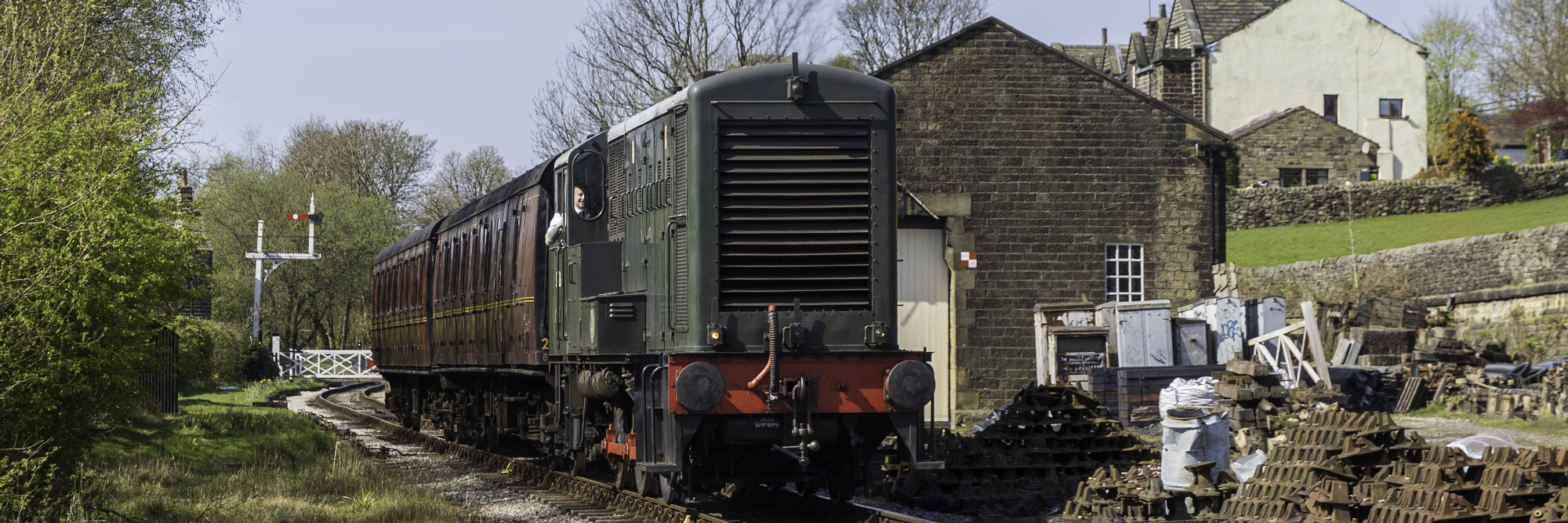Not one of the most successful prototypes of modernisation plans
Not all prototypes submitted for consideration for mass production as British Railways looked to modernise in 1955. Many fell by the wayside and were unceremoniously sent for scrap after a short life.
Changing circumstances leading to a successful life
D0226 was not unsuccessful in its conception and design as life in preservation was to prove, but times they were a-changing and the work for which D0226 was designed was disappearing from the railway scene. Thankfully its Achilles heel for BR is ideal on a preserved railway.
Data File
Built: 1957
Engine: English Electric 6RK of 373 kw (500 hp) at 750 rpm
Transmission: Electric
Weight: 48 Tons
Tractive Effort: 33,000 lbf
Max Speed: 35 mph
Numbers carried during working career: D226, D0226
An unsuccessful prototype, condemned to the annals of history
During the 1950’s the rail industry as a whole started to look more seriously at dieselisation as the future form of motive power and most independent manufacturers realised that, for their long term security, a success in this field would be most advantageous. English Electric (who were a conglomerate of various builders including Vulcan Foundry) made several prototypes for British Railways to test and evaluate them. Several of these designs ended up being developed and put into production for everyday service including the famed ‘Deltics’.
No. D0226 was one of two prototype engines built to the same design with one having electric transmission and the other having hydraulic transmission (no. D0227′). The design was made for shunting and transfer work between yards and stations. Both engines were given to British Railways and extensively tested at locations all round England at places like, Liverpool, Doncaster, Stratford (London) and Bristol. They were also tried as banking engines at Gunhouse Incline near Scunthorpe. British Railways had the use of No. D0226 for three years during which it clocked up 38,000 miles. Lt soon became apparent however, that the designs were flawed. The engines were too powerful for usual shunting duties and not versatile enough for any other useful work.
What these two engines did prove to English Electric, though, was that the future lay with electric transmission and not hydraulic. No. D0226 had shown itself to be the more successful of the two types, so, on return to Newton-le-Willows, after the three-year testing period with British Railways, D0227 (the hydraulic version) was scrapped while D0226 was retained by English Electric for occasional shunting duties.
An unsuccessful prototype that found its place in preservation
The engine was placed on permanent loan to the KWVR by English Electric in 1966 and has been found to be a most useful engine for the line. As the line has a 25 mph maximum speed limit, many of the limitations found in British Railways service are eliminated. The 500 hp power rating means it can deal with our works-trains at a speed that does not hamper passenger services working in the opposite path. The engine is capable of standing in on passenger services in the event of a steam engine failing in traffic. All in all, this engine has found a niche in preservation which it never found before.
In 2014 D0226 had its greatest passenger triumph when it was one of the two diesel locomotives used to haul the downhill leg of the intensive two train operation that brought spectators to the Worth Valley during the Tour de France in July of that year.
In 54 years of operation on the KWVR, D0226 has sported many varied and striking liveries but currently sports one that is appropriate to its life on the national network. However, whatever the colour scheme, D0226 is arguable the most reliable and useful engine on the 5 mile branchline.
